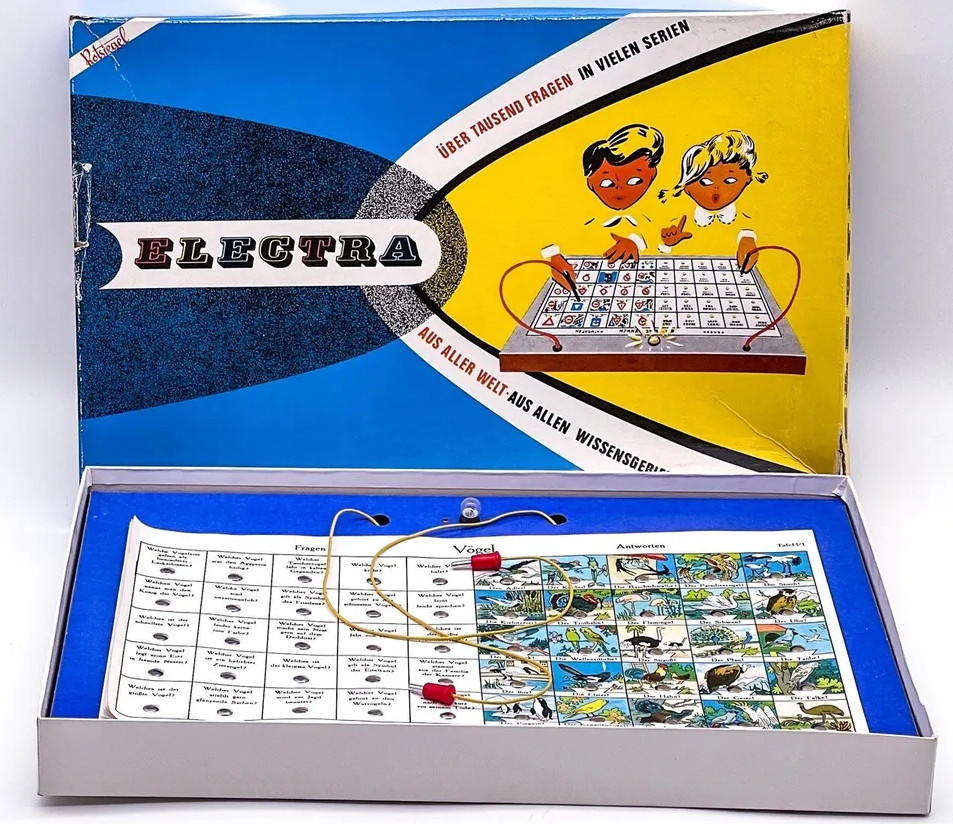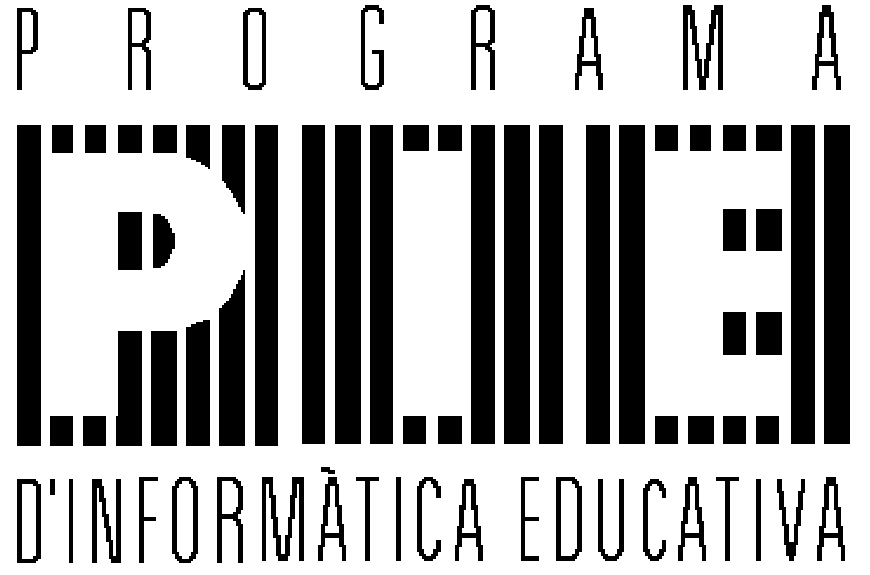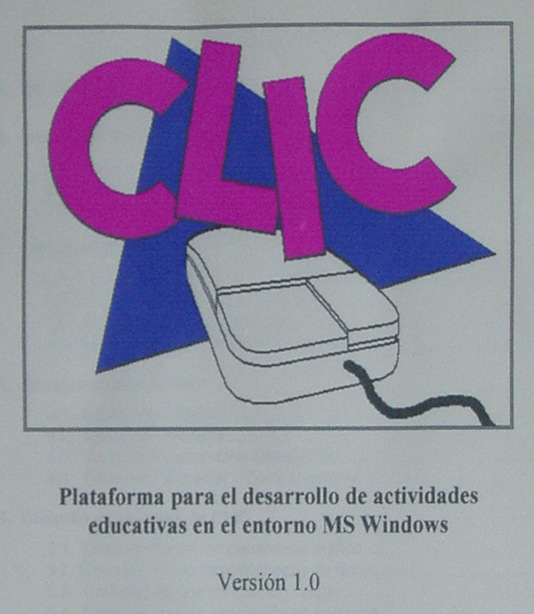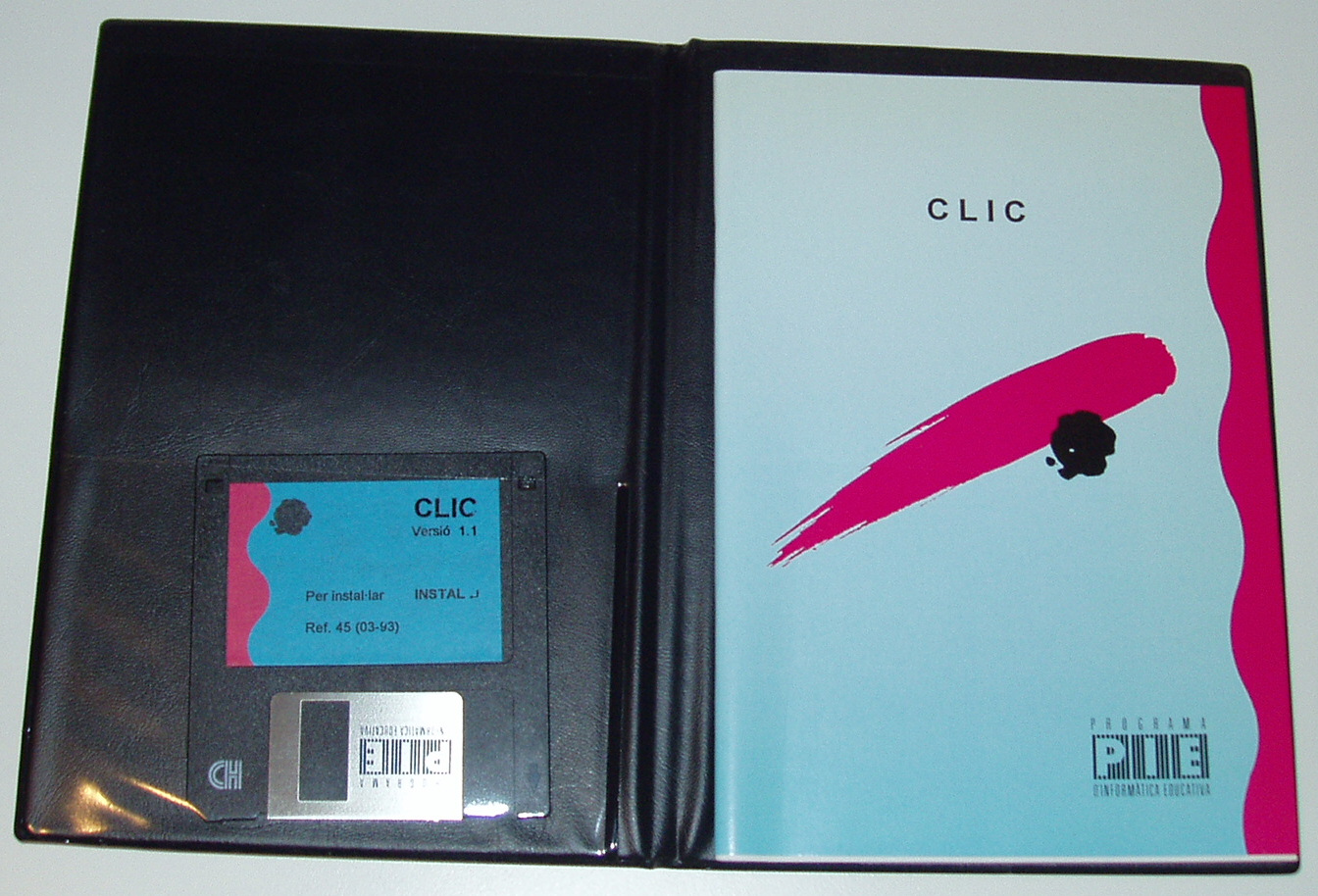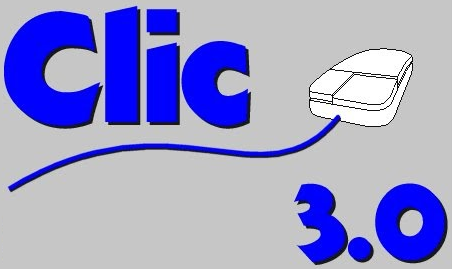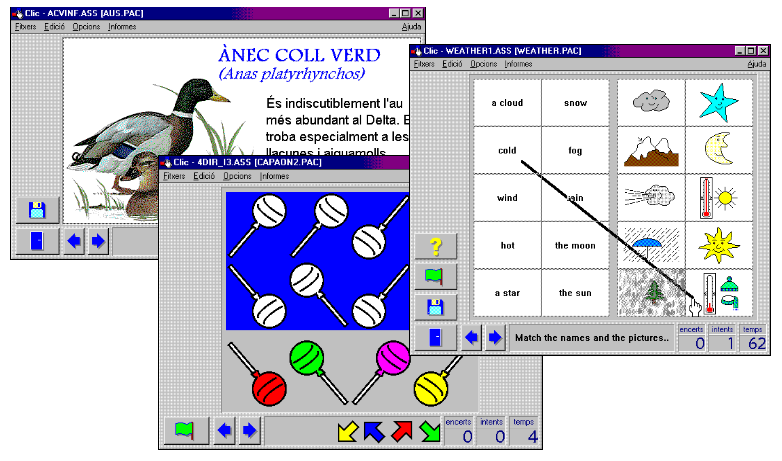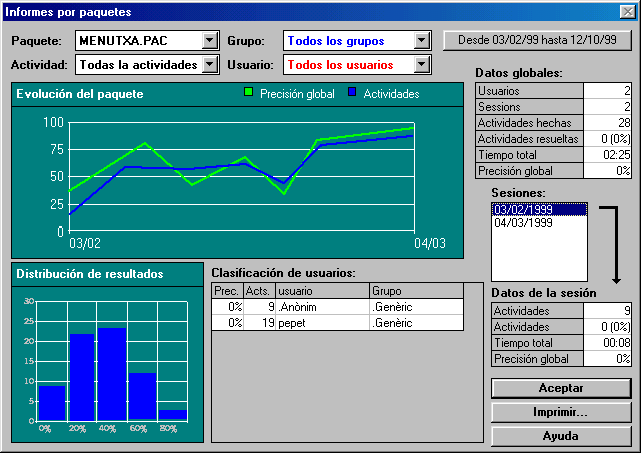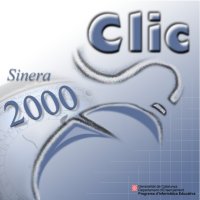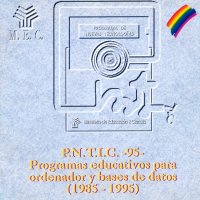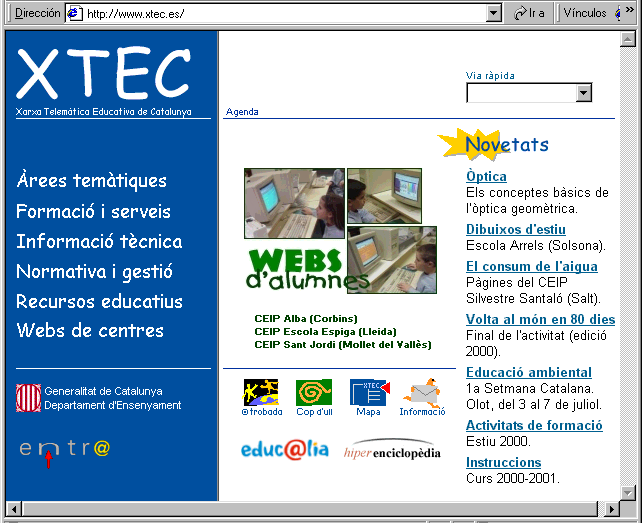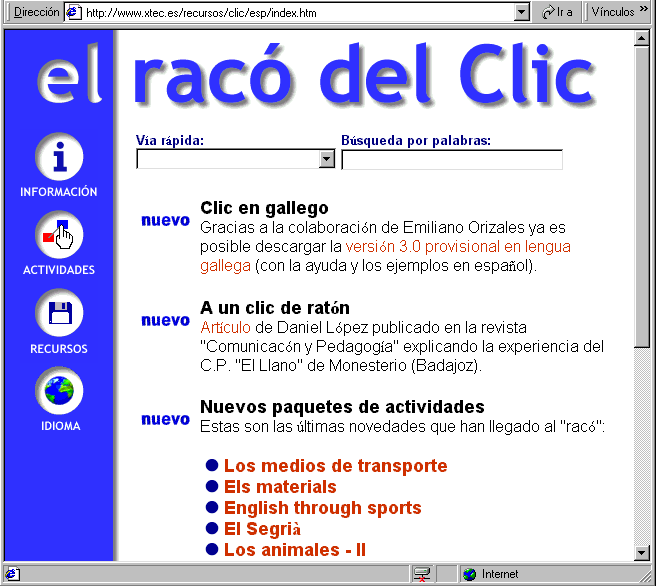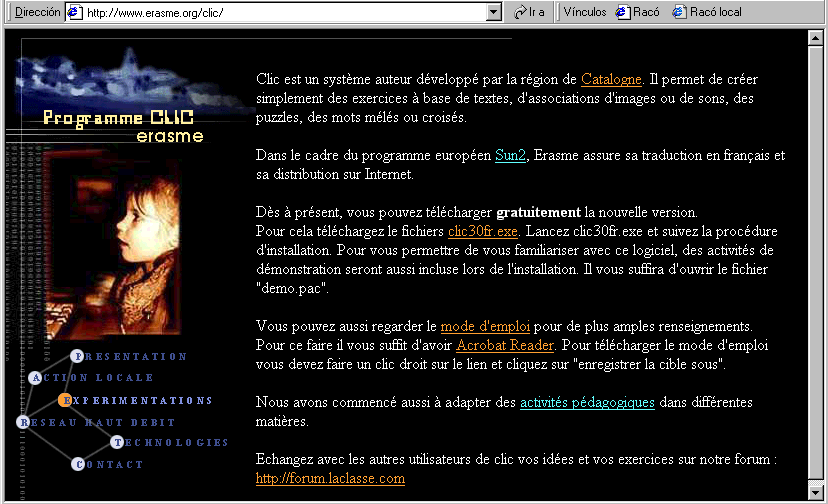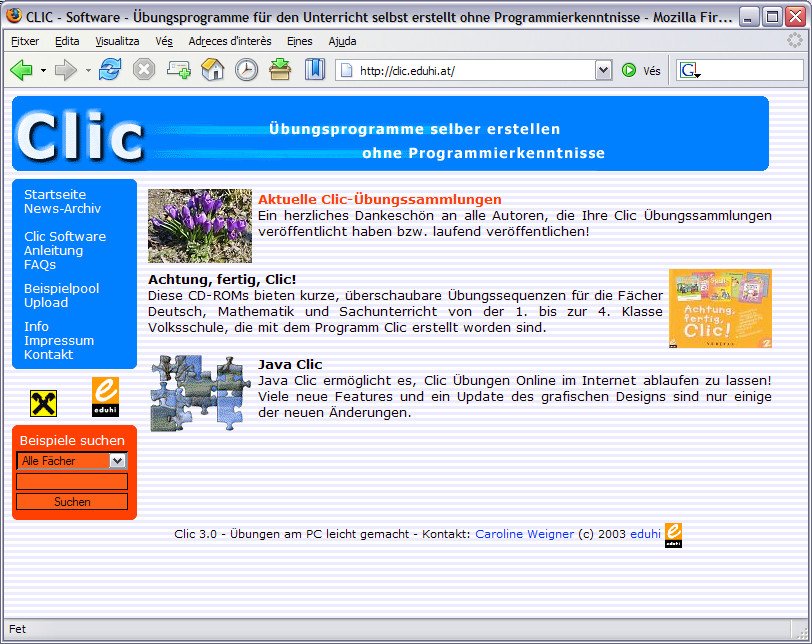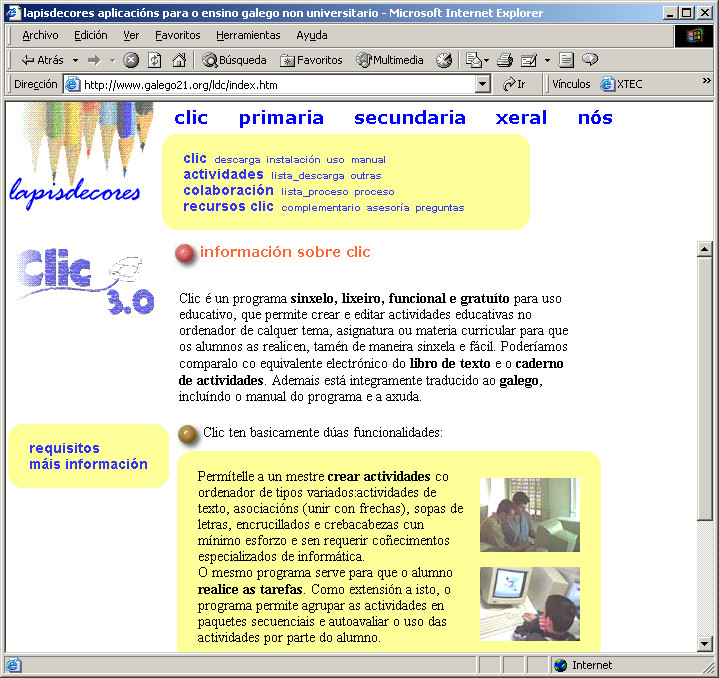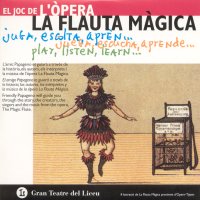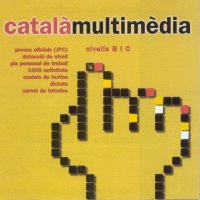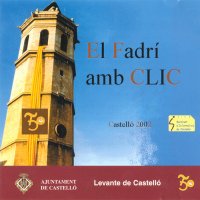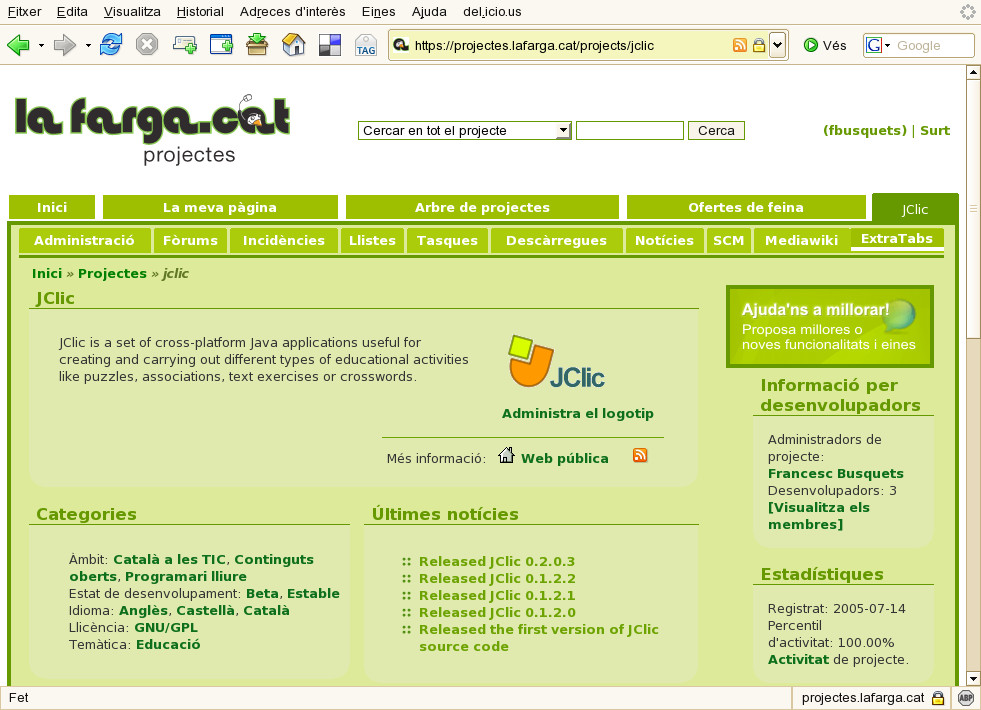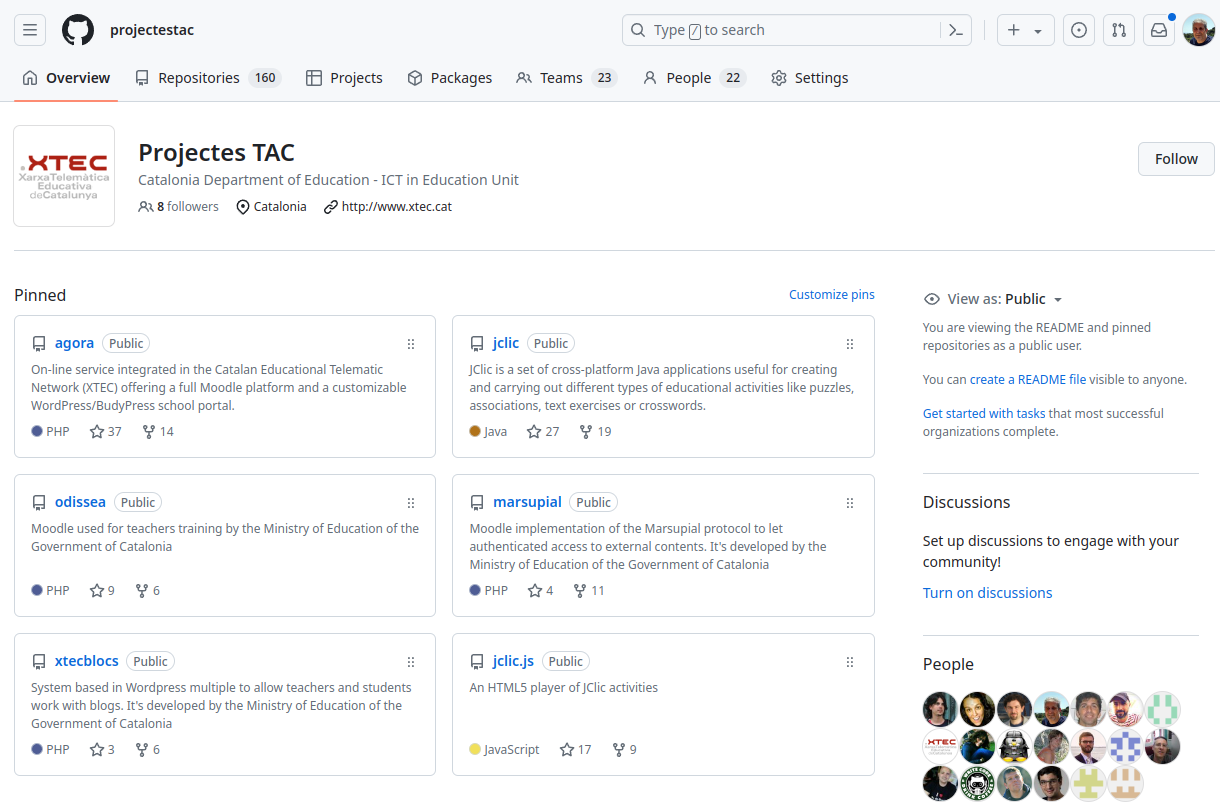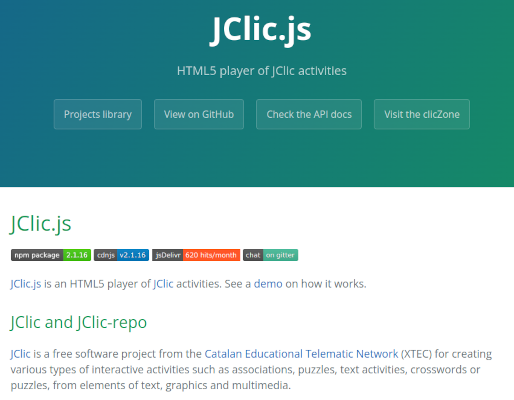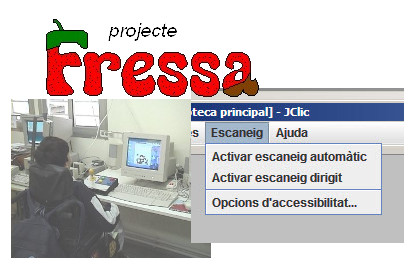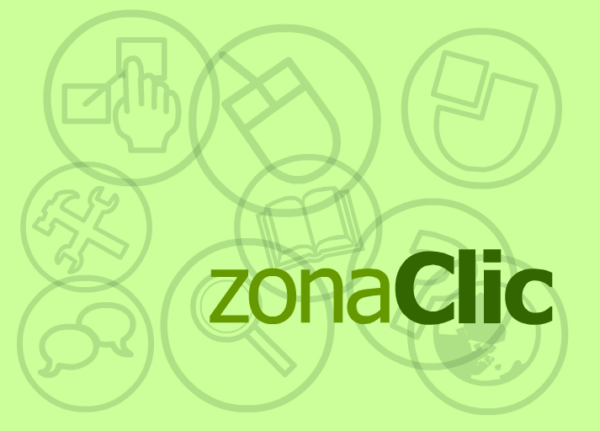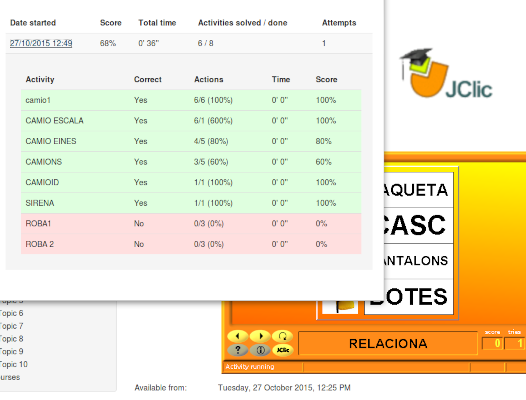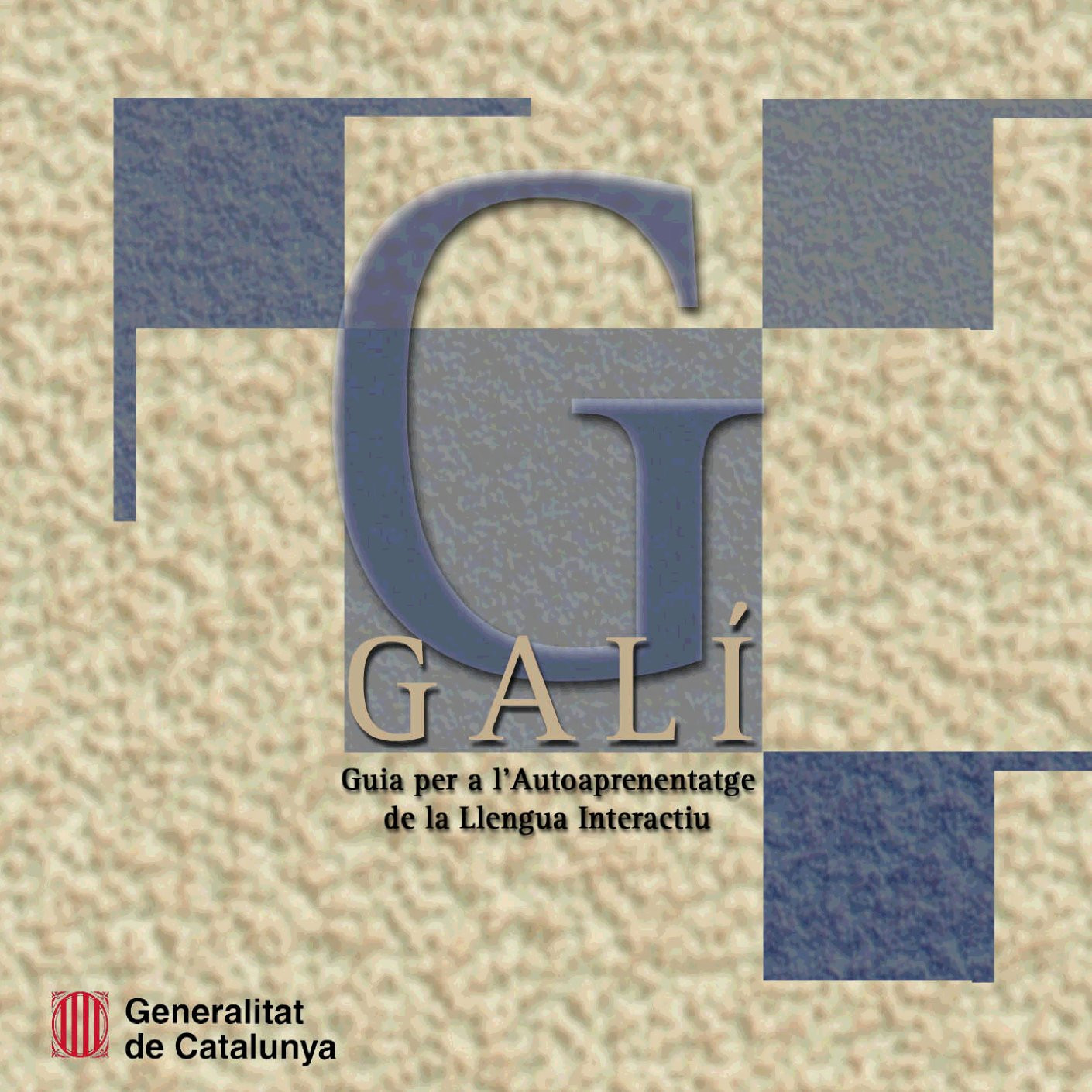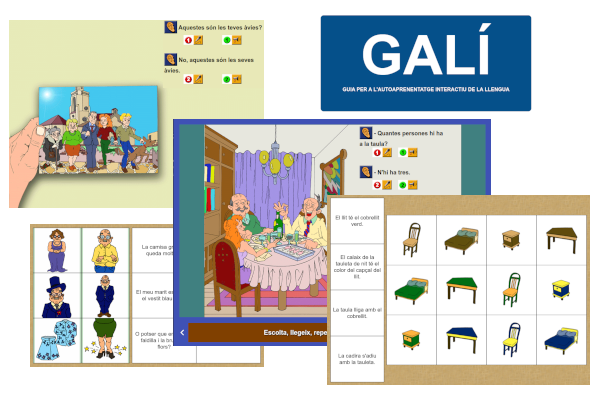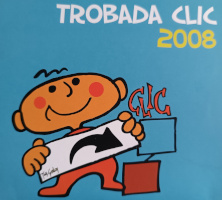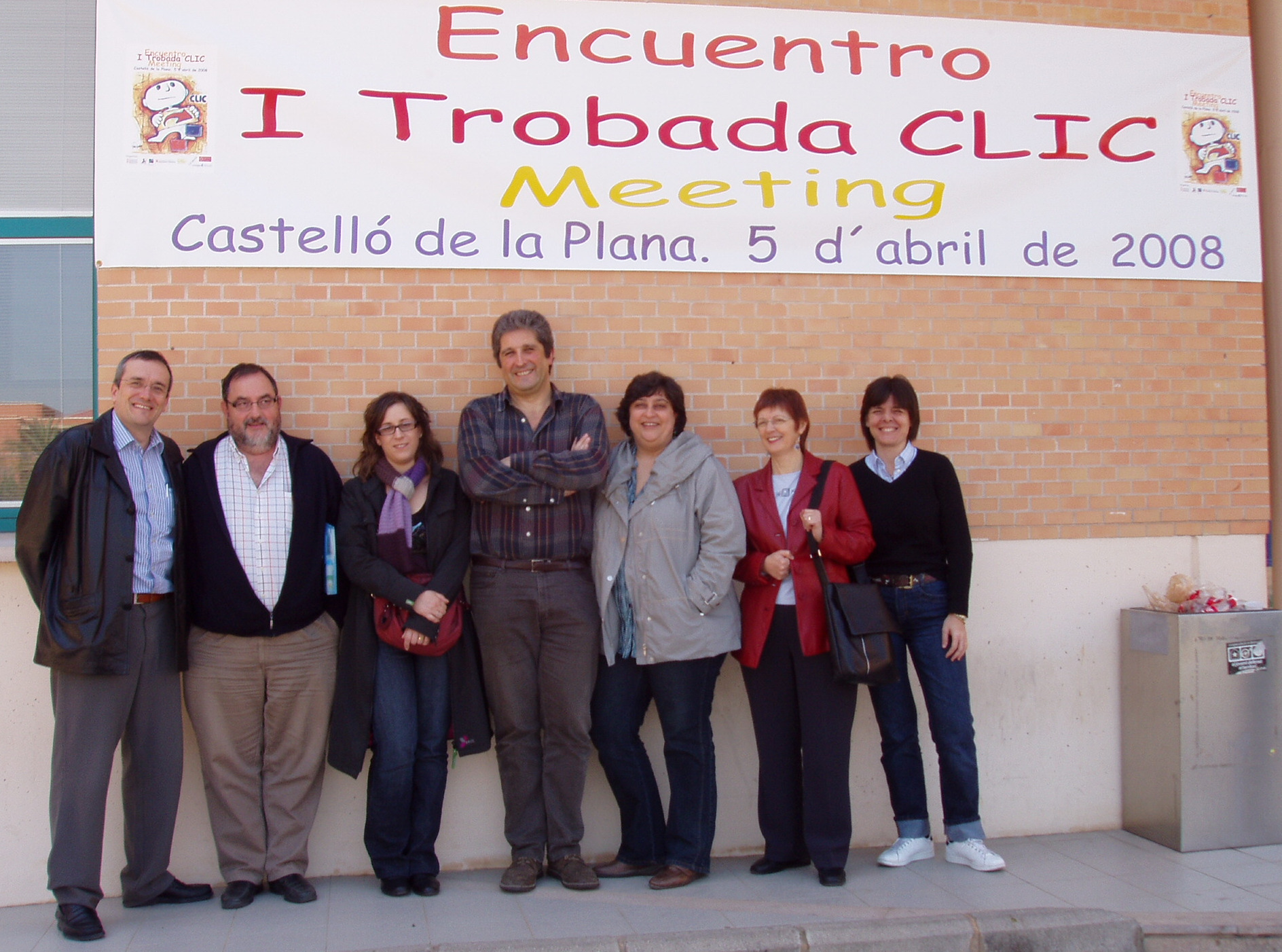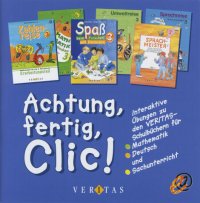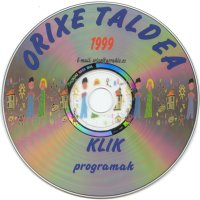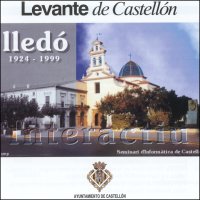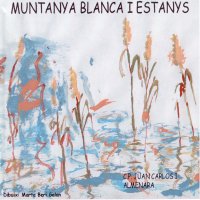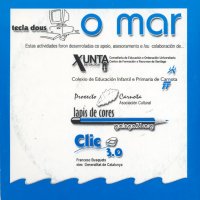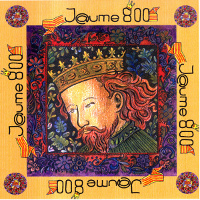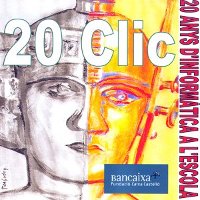History of the Clic project
Electra, the antecedent of Clic
In 1989, the Educational Informatics Program (PIE) of the government of Catalonia tasked professors José Luis Abreu, Albert Fàbrega and Marta Oliveró with the development of a computer application intended to facilitate the creation of educational activities in digital support for teachers. This software, called “Electra” because of the similarity to a popular board game, was created using the programming language Pascal on the MS-DOS operating environment and made it possible to create activities that basically consisted of relating images and texts.
Clic
Francesc Busquets, teacher and software developer of the PIE team, created in 1990 the first prototype of an application that reproduced the behavior of activities for Electra (simple associations) in a graphical environment, dragging images and drawing connecting lines on the screen with the mouse. This application, which required you to click (“clic” in Catalan) with the mouse button on the graphic elements displayed on the screen, was developed using the programming language C++ on the Windows 3.0 operating environment.
From this initial idea, and thanks to the contributions of the PIE team headed by Martí Vergés and Ferran Ruiz, “Clic” was expanding its types of activities: complex associations, puzzles, information screens, letter soups, crosswords and various types of text activities. Added to this is the ability to use multimedia resources such as BMP and GIF images, WAV and MP3 digital sounds, AVI videos and MIDI music files. The concept of “package of activities” is also incorporated, consisting of presenting the student with a series of exercises sequentially, and the possibility of recording in a database the results obtained by the students when doing the activities.
The Arith module
An important innovation of Clic was the possibility of incorporating external modules that generated the content of the activities randomly. Professor Jordi Quintana, from the University of Barcelona, conceptually designed the module “Arith“, which allows you to create exercises with arithmetic operations generated at random, based on previously established criteria. The document “Mathematical, psychopedagogical and curricular foundations for the generation of mental calculation activities for primary education with the Arith module” explains the principles that led to the creation of this module.
International dissemination
In 1992 Clic won the first prize in the competition “Educational programs for computer” organized by the Spanish Ministry of Education (PNTIC).
The use of Clic is disseminated in Territorial Seminars on Educational Informatics, as well as in teacher training activities organized by teacher associations, teacher training centers and professional colleges. This means that many teachers are beginning to use it as a tool to create interactive digital materials designed from diverse work methodologies and adapted to the specific needs of students.
Clic is also included in the various editions of the CD-ROM “Sinera on disc” that the Department of Education published between 1991 and 2000.
The selfless collaboration of teachers from the Basque Country, Navarre and Galicia enabled the translation of Clic into Galician (Miguel Anxo Bouzada) and Basque (Abel Camacho and Pedro Lonbide). Later, PIE’s participation in the European program “Teleregions” also facilitated the translation of Clic into English, French and German. “Teleregions” was a European initiative of interregional collaboration in telematics applications in which Baden-Württemberg, Catalonia, Lombardy, North of England, Rhône-Alpes and Upper Austria participated. In addition to translating the program interface and several activity packages, the course about activity creation was also adapted.
Clic and JClic have been presented at various conferences and seminars in Germany, Argentina, Austria, Belgium, Brazil, France, Italy, Panama, Venezuela and Chile, among other countries.
The “Clic corner”
In 1995, with the launch of the Internet services, the Educational Telematics Network of Catalonia (XTEC) created a website called “El racó del Clic” (The Clic corner). Here, teachers sent their activities to share it with colleagues around the world. This library, initially made up of dozens of activity packages, has grown today to 2,600 projects, with about 160,000 activities where more than 270,000 multimedia objects (mainly images, sounds, videos and MIDI sequences) are used.
Publications on CD-ROM
The CD-ROM became in the early 2000s a very popular support for disseminating software and interactive applications. Clic was used by various entities, teacher associations and institutions as an engine to generate publications in CD-ROM format with activity packages on various topics.
In the publications section you will find many examples of this type of production made with Clic. Special mention must be made of the creations of the Informatics Seminar of Castelló, formed by a tireless group of teachers very active in the production of innovative educational materials in Valencian, as well as the productions of colleagues from other places in the Valencian Country, the Balearic Islands, the Basque Country, Madrid, Galicia and Chile.
The creations “Norma” and “The Magic Flute” by Educational Service of the Gran Teatre del Liceu, which aim to bring the great operas closer to students, are also remarkable.
In 2000, a special edition of Sinera CD-ROM was published with all the activities collected until then in the “Racó del Clic”. This CD-ROM was distributed to all educational centers in Catalonia, and copies were also provided to many schools in other communities and countries that requested them.
JClic
The programming language Java, developed at the end of the 90s by the Sun Microsystems, opened the door to a new paradigm in the development of computer applications. Its most innovative features were:
- Multi-platform design, which allows the same application to run on Windows, Linux, Mac and Solaris systems, with the same appearance and functionality.
- The “applet” format, which allowed applications to be embedded directly into a web page, running in the user’s browser without having to install them on the computer. Unfortunately, “applets” stopped working in 2017.
- The standardization of application access to various database systems, and the possibility of developing applications that run on web servers, serving dynamic pages.
The development of JClic, publicly released in March 2002, represented a clear evolution of the possibilities of Clic: for the first time, applications could be created and used in several operating systems, and also be embedded in a web page.
The JClic project was structured around four components:
- JClic Author: Tool that allows you to create or modify educational activities.
- JClic Player: Application where the activities are carried out, designed to be used by students.
- JClic Applet: A variant of JClic Player designed to run directly on web pages.
- JClic Reports: System for collecting and consulting the results obtained by the students when doing the activities (number of attempts, guesses, time spent on each activity, etc.)
JClic allowed direct import of all the activities created with Clic, thus giving new life to the materials developed until then, with new possibilities such as sound recording, complex shapes and personalized graphic themes, among others.
One of the factors that drove the development of this new version of Clic for Java was to be able to take advantage of and develop new activities for the edu365.cat portal, created in 2001.
Free software
The development of JClic was conceived as a free software project distributed publicly in accordance with the terms of the GPL license. This ensures that all interested parties can use it for any purpose, access the source code of applications, contribute to its improvement, translate it into other languages or modify it freely to give rise to derivative applications. The only condition is that these derivative applications must be distributed under the same license, thus becoming free software.
The various add-ons and utilities that have been developed subsequently, including the JavaScript engine and the ZonaClic software, have been released under version 3.0 of the same GPL license and, more recently, under the European Free Software License (EUPL). The EUPL license is the currently recommended standard for projects supported by public institutions of the European Union.
In 2004, the government of Catalunya launched the free software repository La Farga (The Forge), one of the actions contemplated in the “Free Software Roadmap” promoted by the Secretariat of Telecommunications and Information Society (STSI) led by Oriol Ferran. JClic was one of the projects hosted on this portal until its closure in 2012.
Another prominent project born on these dates is the Linkat GNU/Linux distribution, coordinated by Joan de Gràcia, which offers a complete operating system and a selection of free software adjusted to the needs of the Catalan educational field. JClic has always been part of Linkat, and the project also provides Debian and Flatpak packages, to facilitate its installation in any Linux distribution.
Since 2013, the components of the JClic project have been housed in the projectes TAC organization in GitHub. This space, created by the Area of Technologies for Learning and Knowledge (Area TAC) directed by Jordi Vivancos, houses the free software projects of the Department of Education of Catalonia. In the section JClic applications you will find descriptions and links to the main repositories that make up the current JClic project.
JClic Fressa
Jordi Lagares, professor specialized in inclusive technology and promoter of the Fressa project, developed the derivative application JClic Fressa, which facilitates access to activities for people with functional diversity.
Among other accessibility improvements, this variant of JClic allows you to define an automatic scan where the cursor passes over all the boxes of the activity. The user only has to wait and press a key or button to select the box they want to activate.
The Clic Zone
Faced with the growing number of projects hosted in the “Racó del Clic”, which was beginning to overwhelm the capacity of a simple web page, XTEC assigned a server to the project (clic.xtec.cat) in October 2004. This server hosted the web portal ClicZone, with a lot of documentation translated into three languages (Catalan, Spanish and English) and a database that allowed specific searches on the thousands of JClic projects sent by teachers.
The Clic Zone moved to this site (running on Nodes) in 2024. The “clic.xtec.cat” server continues to offer project hosting services, file downloads and database infrastructure. The old Clic Zone can still be consulted in this archived site.
Throughout all these years, the coordination, selection and publication of projects in the Clic Zone has been possible thanks to the patience and dedication of Mònica Grau, Imma Palahí, Isabel Oussedik, Ester Tomàs and Francesc Busquets.
JClic activities for the web
Oracle, owner of the Java platform, stopped in 2015 the possibility of integrating these type of applications into a web page. This meant the end of “applets”, which had greatly facilitated the distribution of JClic activities until then.
Also in 2015, JClic.js was created, which allows turning JClic activities into an element of any web page, such as an image or a video. This module was developed using the JavaScript programming language which, despite the similarity in name, has little to do with Java. To do this, the entire code of the application had to be rewritten, starting from scratch and taking full advantage of the possibilities of the web platform, more powerful than the Java desktop environment.
“JClic.js” allowed for the first time the use of JClic activities on tablets and mobile devices with Android and iOS systems (iPad), and facilitated their integration in all kinds of web pages, blogs and virtual learning environments.
It should be noted that “JClic.js” is only the component that allows the activities to be executed within web browsers. The creation of new activities, as well as their modification, must continue to be done with JClic Author, available here for downloading.
Integration of JClic with Moodle
Virtual Learning Environments (VLE) allow the use of many types of educational resources, making it easier for teachers to monitor the results obtained by their students when doing the proposed activities.
Sara Arjona developed in 2012 a specific module for JClic activities in Moodle, which allows JClic activities to be embedded in virtual classrooms. This module facilitates a thorough monitoring of the time spent, the number of attempts and the result achieved by each student in each activity. Since then, the module has been improved and updated thanks to the contributions of Pau Ferrer, Toni Ginard and Francesc Busquets.
Integration with other VLE is also possible thanks to the ability to export JClic projects to the SCORM format. This format does not offer such exhaustive detail of each student’s results, but it records the time spent in each activity package, as well as the average score achieved.
Clic meeting 2008
On April 5, 2008, the first worldwide meeting of JClic users and friends took place at the Universitat Jaume I (Castelló de la Plana). The event was organized by the Castelló IT Seminar, CEFIRE de Castelló, the Educational Telematics Network of Catalonia and the Center for Education and New Technologies of the UJI, directed by professor Jordi Adell. Several presentations related to the use of free software in educational innovation projects were presented and discussed proposals for new functionalities and improvements. On the occasion of this meeting, a double DVD-ROM was published with the entire library of projects from the ClicZone and various interactive applications created by the Castelló team.
Remarkable collections of JClic projects
The library of the Clic Zone has some remarkable projects, be it for the originality of the approach to the activities, the organization of the learning routes, the quality of the graphic design or the integration of multimedia resources:
Imma Palahí’s JClic projects
The work done by Imma Palahí is so extensive that we couldn’t fit it in this space. That’s why we dedicated it to him this article with a summary of his great contribution to the Clic project.
GALÍ
An extensive collection with more than 5,000 activities for self-learning the Catalan and Occitan languages, explained at length in this article.
Aventura’t amb l’ortografia
This collection, created for the Catalan language section of the edu365.cat portal, is made up of 67 packages with more than 2,000 activities to work on spelling, organized into three levels of difficulty.
Andròmeda
It is a collection of activities for knowledge of the social and natural environment for primary education (middle and upper grades) created by Josep Planas i Gamundi. It consists of 30 packages with more than 2,100 activities.
Coneixement del medi social i natural
Another great collection of activities, created by Joan Verdaguer and Andrés. It is made up of 122 packages that contain more than 5,600 activities, aimed at middle and upper primary.
Geoclic
It is a set of more than 500 geometry activities grouped in 40 thematic packages, created by professor Jaume Bartrolí. The package is mainly aimed at ESO, although some activities can be perfectly used in primary school. In the Clic area library you will find it translated into Catalan, Spanish, Basque, Galician, Italian, English, and French.
Proves cangur
Set of 25 packs with over 1,000 activities based on the annual international maths contest kangaroo, organized by the Association Kangourou sans Frontières. You will find collected problems from the tests that took place between 2008 and 2013.
Toni Miquel’s activities
Toni Miquel has been one of the prominent users of Clic since its origins. He has contributed to the library more than 25 projects with thousands of activities, all with original drawings edited pixel by pixel. His projects, initially created in Valencian, were translated into Spanish, Basque, Galician, French, Italian and Occitan.
Miren Garralda’s activities
Miren Garralda is also a pioneering teacher in the integration of music and sounds in the activities, and in cooperation with teams of teachers from other countries and regions in order to adapt and translate the activities into different languages, thus promoting the spirit collaborative of the Clic project.
This relationship is not exhaustive: the library of activities has been built with the participation of thousands of teachers who, throughout all these years, have wanted to share their educational proposals, designs, ideas, and creations. Collaboration and spirit of open sharing has been key in the construction of a valuable resource. Since its inception, the Clic project has aimed to put digital technology in the hands of teachers in order to make the most of it their educational possibilities.

